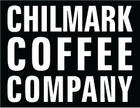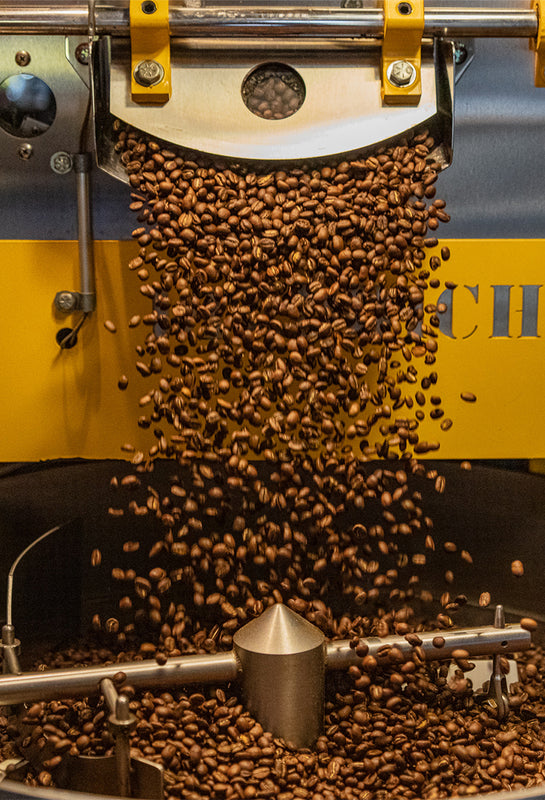OUR COMMUNITY
A collaboration between farmers and fisherman, summer intellectuals and world economic leaders, photographers and painters, poets and stone masons, tradesmen and master craftsmen, elderly and young - All working closely to continue the values and slow pace established generations ago on this glacial moraine in the Atlantic Ocean. People here make things slowly and with pride. They understand and live as part of this unique environment.
OUR LOVE OF COFFEE
Jenny and I started drinking coffee in the winter of 1983 as college freshman in Lancaster, PA. Art school in NYC during the mid-80's shed light and emphasized the necessity for a sports walkman (yup, that old!) and coffee in our lives. Now, 40 years later, we are members of this vibrant island community, working to create products that are valued here and beyond. We bring our own experiences as artists/ businesspersons/ athletes together to create a coffee company that reflects the values of hard work, planning, exceptional product, style and uncompromising vision. We are a family business. Jenny grew up on this island and I have lived here 34 years. We enjoy working with small businesses that reflect our sense of local community and pride in well crafted product. We deliver our products ourselves and that means you get a smile, a handshake, maybe a broken down VW in your driveway for a while and maybe a funny story when we meet!
OUR GOAL
Our goal is exceptional coffee. We stay focused on roasting only specialty grade coffee to the best of our ability and provide training and understanding to our conspirators of what went into that coffee to now be in their hands. We source coffee from producers/farmers who are being more than fairly compensated for the work they do, which encourages reinvestment in their farms and communities. This is not a new idea, if you buy anything from people who make their own products. Pay them well, so they can continue to make great quality things by hand and live good lives!
FRESH IS STILL BEST
WHY WE DATE OUR ROASTS
What Roast Dates Can Tell You About Your
Desperate for freshly roasted coffee, but not sure exactly how fresh is best? Its roast date can tell you something, but not everything. Read on, we’ve got all the answers you need—and some of them might surprise you.
THE ROASTING DATE ISN’T EVERYTHING
First of all, we need to clear one thing up. We’re talking about roast dates, but that alone won’t let you know if the coffee’s any good.
When buying food, you look for the freshest items. Of course, you check the best before date. Then there are the visual cues: the firmness of an avocado, the bruising on an onion, the redness of a fish’s gills. Yet to find out how good the food really is, you need to serve it up to eat.
The same principle applies with coffee. Never judge the quality of beans solely on the roast dates. At the very least, you need to open the bag, calibrate the beans the best you can, taste, and evaluate.
Now that we’ve established that the roasting date isn’t everything, let’s look at what it can tell you.
WHAT DOES FRESH REALLY MEAN?
Which beans are your freshest?
As a roaster, you hear this a lot. Some of you readers may have even asked this question yourselves. My answer to this question is: Are you intending the coffee to be a gift, or do you plan to consume it within a week?
I like to advise customers that all the bags on the shelves are between 4 to 7 days old and this is still categorised as fresh. Yet more often than not, I receive an impatient or even incredulous look followed by a clarification that they are looking for coffee roasted yesterday or that same day.
Some claim that coffee needs nothing more than 24-hours and that it’s at it’s peak on the 3rd day, yet the coffee won’t have had enough time to age by then.
WHAT’S THE IDEAL ROASTING DATE?
Treat buying coffee like buying bread: only buy enough for a week or so. Find out the best aged-period (peak) of the coffee and then work your way backwards from when you intend to consume the coffee. This will enable you to find your ideal roasting date. Search for coffee roasted within 3 to 5 days of that date.
Generally, if I’m looking for coffee to consume immediately, I find that anything between 8-21 days of roasting is best. However, you should always pay attention to the roaster or barista’s advice on the peak roast age for their coffee.
WHY DO PEOPLE BELIEVE THAT THE FRESHER, THE BETTER?
The misconception that fresher is better is, I feel, due to us third wave roasters being the victims of our own success in educating consumers. Yes, you heard that right.
In the surge of artisan and small batch roasting somewhere between 2007 and 2010, we tried to differentiate ourselves from commercial roasters with phrases like roasting fresh batches and sell by roast date instead of expiry dates. Of course, much later on, we relaxed our focus on freshness and instead added ‘Best consumed/brewed within 1-month of roast date‘ to our bags. Yet the damage was done: the fresher, the better has stuck.
SO WHEN IS A COFFEE TOO OLD?
This is a very subjective topic and while roasting professionals often claim average age ceilings, there are just too many variables that are out of our control. I’ve pulled espresso from a lighter roast coffee (note: lighter, not ‘light roast’) that was a month old yet tasted as sweet and good as two weeks before. I’ve also encountered coffee already past its prime on the eleventh day.
Why is there so much variation? Well, the coffee itself has a significant impact, plus the ways in which different roasters apply their style of roasting can change a coffee’s profile, causing it to peak or age differently. Some coffees and roast styles allow for a coffee to remain at its prime anywhere between 14 to even 30 days from the date of roast, so it’s really hard to claim a coffee is either past its date of use or too fresh until it’s been tasted.
When it doubt, ask your roaster. They will always give you the best advice on a specific coffee.
HOW TO MAKE THE MOST OF YOUR COFFEE AT DIFFERENT AGES
Calibrating grind size and adjusting dosage is crucial for bringing out the best flavour of ageing coffee. The older the beans are, the more porous they become. This means that as they’re ground, the structures break down more easily, allowing water to enter and dissolve the solubles. If you use a grind setting calibrated for the same coffee a couple of weeks earlier, it leads to under extraction and an undesirable flavour on the palate.
Tasting is believing; taste profiles are subjective, quality is usually not. So calibrate that grinder, pull those shots, and taste your coffee quality.
This article is from Perfect Daily Grind


